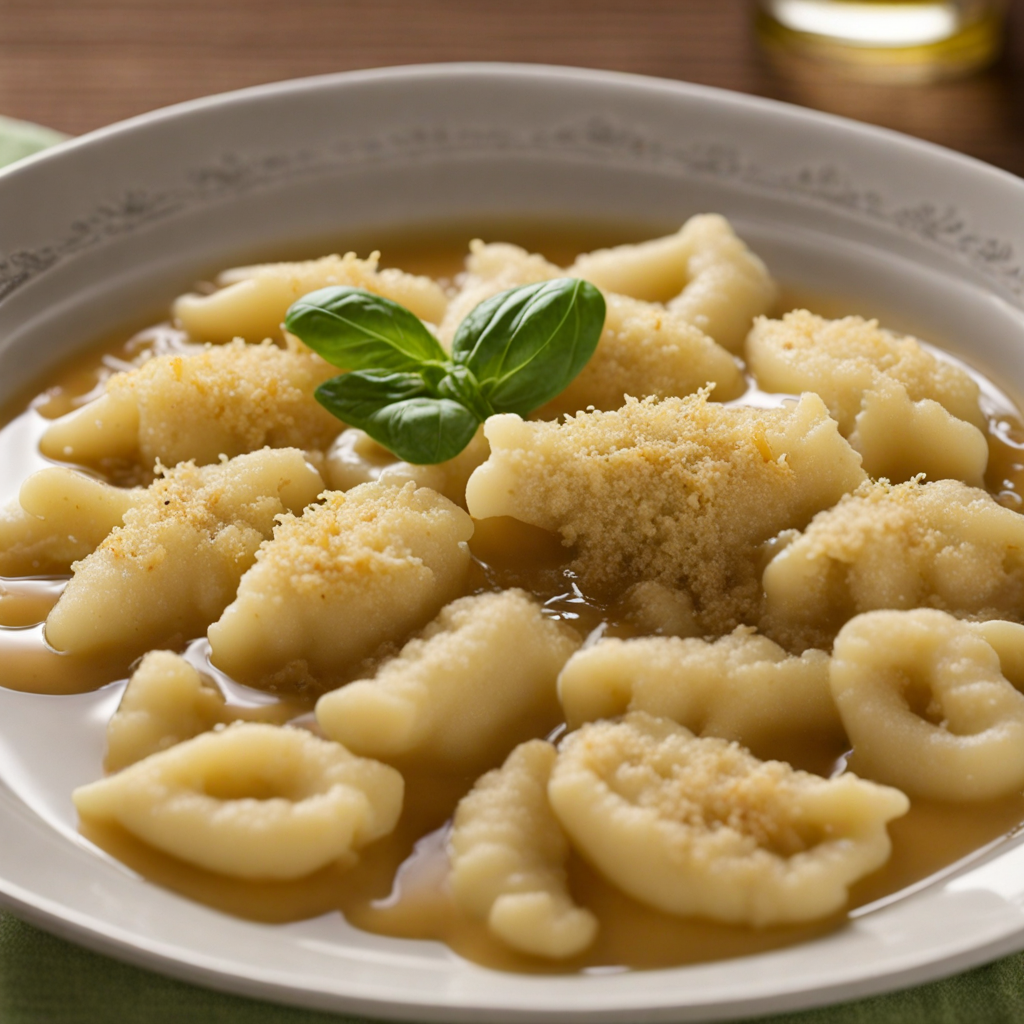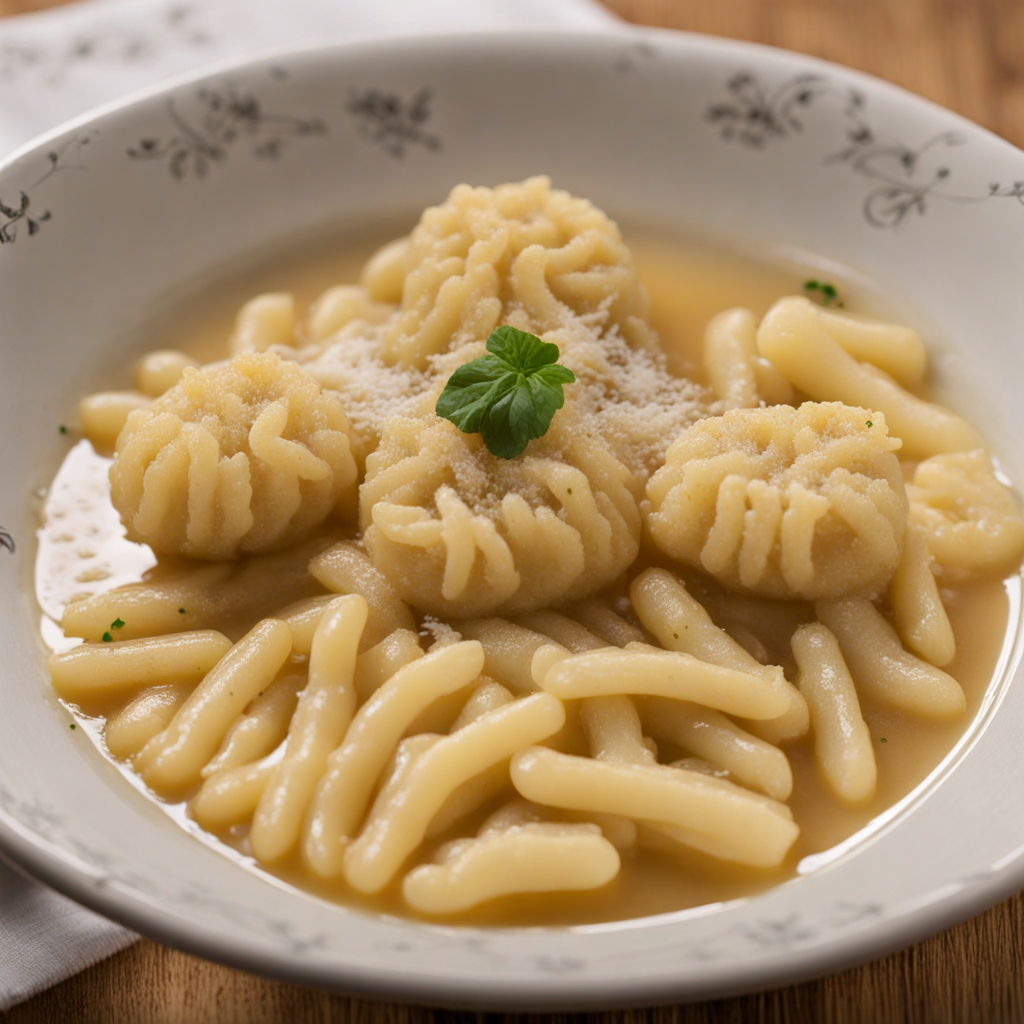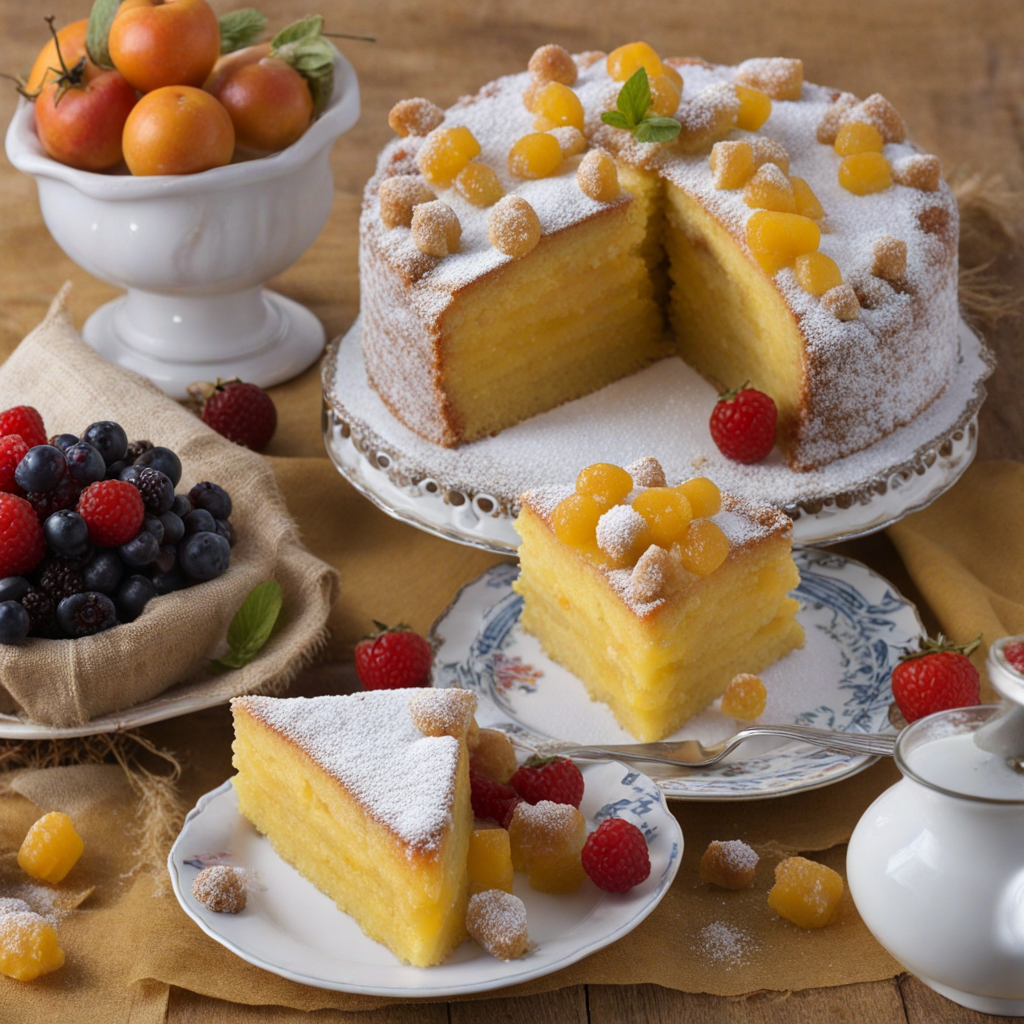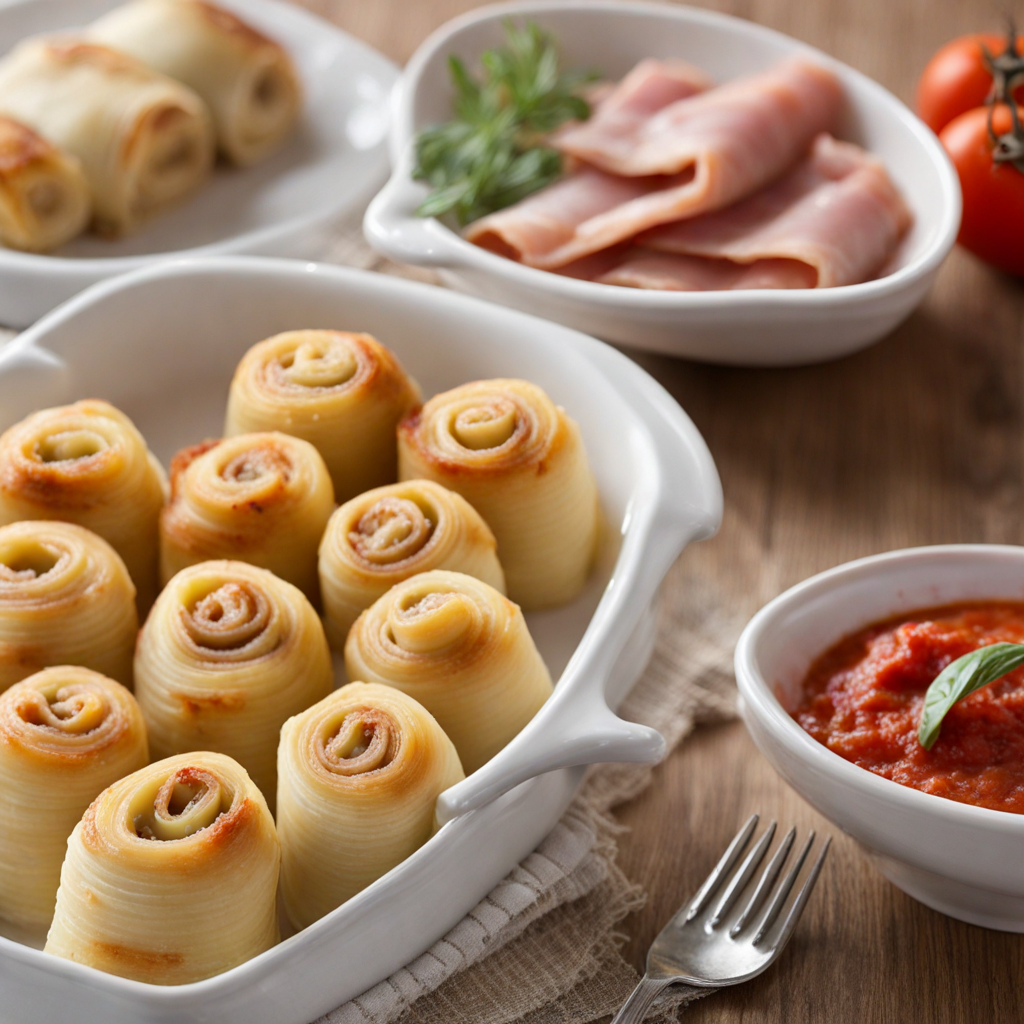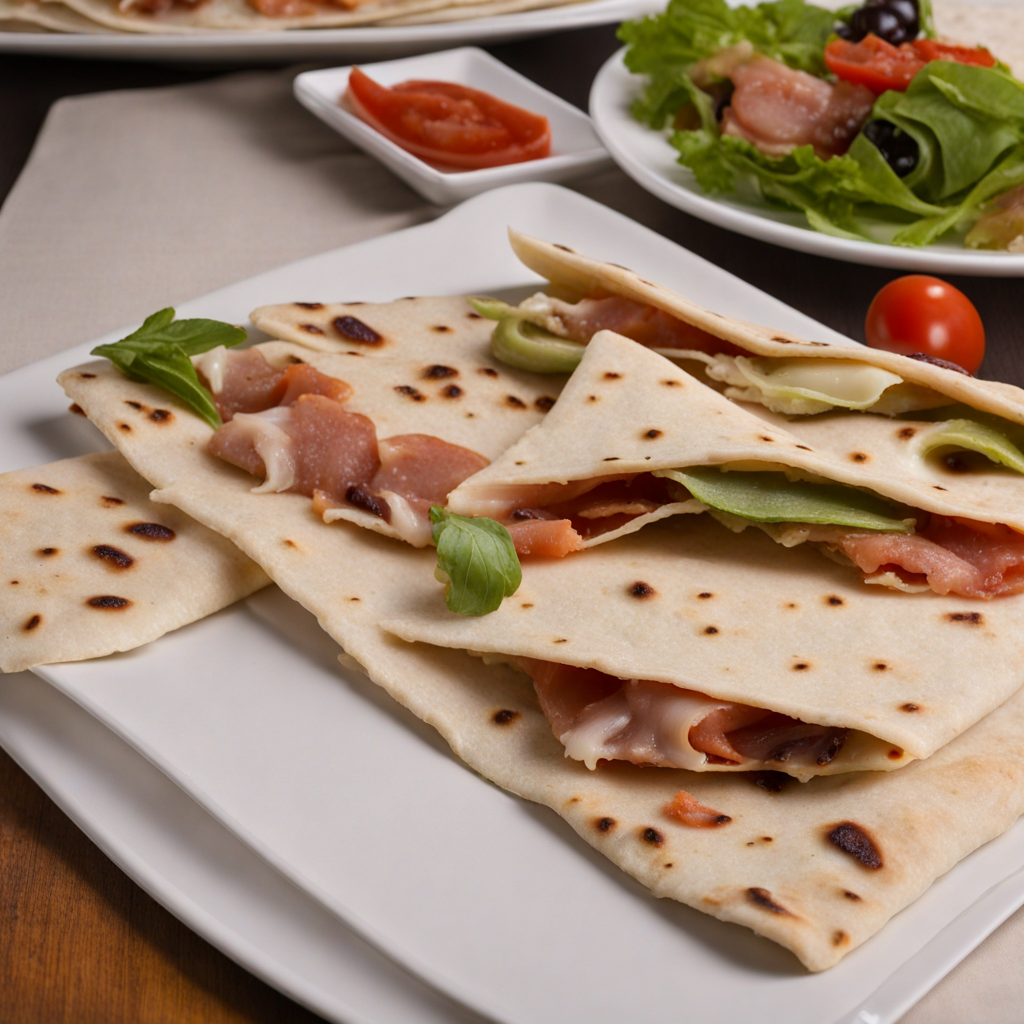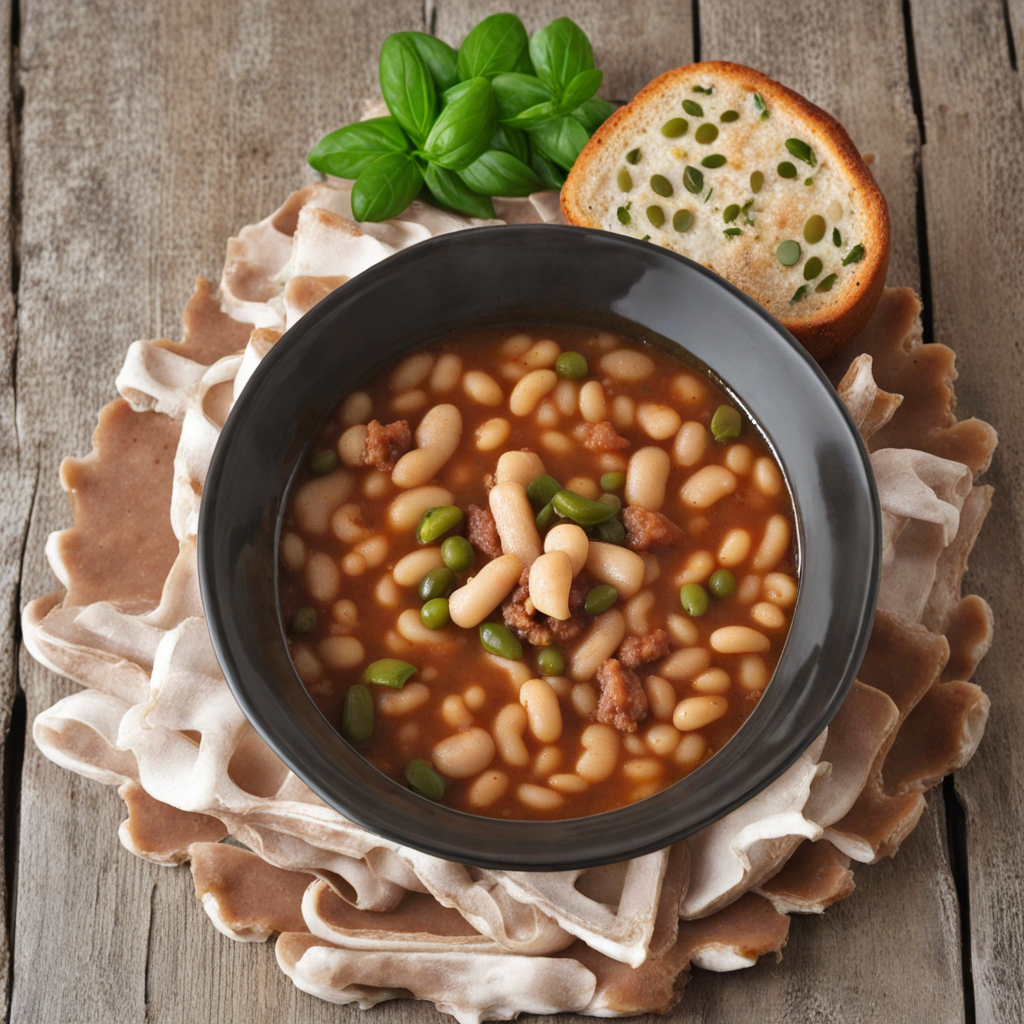Passatelli in brodo
Passatelli in brodo is a traditional dish that hails from the rich culinary heritage of San Marino, offering a delightful experience for those eager to explore new flavors. The dish features passatelli, which are delicate, egg-based pasta strands made from a mixture of breadcrumbs, eggs, and grated cheese, typically Parmigiano-Reggiano. This unique combination creates a comforting texture that is both soft and slightly chewy, providing a satisfying bite that sets the foundation for the dish's flavor profile. Served in a rich and savory broth, passatelli takes on the essence of the surrounding ingredients. The broth is usually made from simmered meats, such as chicken or beef, infused with aromatic herbs like thyme and bay leaves. This combination results in a warm, flavorful liquid that enhances the taste of the passatelli, allowing the simple ingredients to shine through. The broth's depth of flavor complements the pasta, creating a harmonious balance that warms the soul. Passatelli in brodo is not just a meal; it is a comforting embrace on a chilly day. It is often enjoyed in family gatherings or festive occasions, embodying the spirit of togetherness and tradition. As you savor each spoonful, the delightful interplay of textures and flavors transports you to the heart of San Marino, making it an unforgettable culinary experience that invites you to discover and appreciate the simplicity and richness of Italian cuisine.
How It Became This Dish
Passatelli in Brodo: A Culinary Heritage from San Marino Origins and Early History Passatelli in brodo is a traditional dish that has its roots in the Emilia-Romagna region of Italy, particularly cherished in the Republic of San Marino. It is a rustic dish, characterized by its simplicity and the use of readily available ingredients. The origins of passatelli can be traced back to the 19th century, where it emerged as a peasant food, reflecting the agricultural lifestyle and resourcefulness of the people in the region. The dish consists of small, elongated dumplings made from a mixture of breadcrumbs, eggs, Parmigiano-Reggiano cheese, and lemon zest, which are then cooked in a rich broth. The name "passatelli" is derived from the Italian verb "passare," meaning "to pass," which refers to the process of passing the dough through a special tool called a "passatelli maker," or sometimes a potato ricer, to create the characteristic noodle-like shapes. Cultural Significance Passatelli in brodo holds a special place in the culinary tradition of San Marino and the surrounding regions, serving as a symbol of comfort and family unity. In many households, it is a dish that brings people together, often served during family gatherings and festive occasions. The preparation of passatelli can be a communal activity, where family members come together to make the dough and shape the dumplings, reinforcing bonds and traditions. In addition to its role in family gatherings, passatelli has also found its place in the broader cultural context of San Marino. The dish embodies the values of simplicity and frugality that are common in traditional Italian cooking, making use of leftovers and staple ingredients. It is a testament to the culinary ingenuity of the Sammarinese people, who have maintained their gastronomic heritage despite the challenges of modernization and globalization. Development Over Time As with many traditional dishes, the preparation and ingredients of passatelli have evolved over time. While the basic recipe has remained relatively unchanged, variations have emerged that reflect the personal tastes and regional influences of the cooks. For example, some recipes may incorporate different types of cheese, such as pecorino or ricotta, while others might include additional flavorings like nutmeg or herbs. In the latter half of the 20th century, as tourism began to flourish in San Marino, passatelli in brodo started to gain recognition beyond its local roots. Restaurants and trattorias began to feature the dish prominently on their menus, catering to visitors eager to experience authentic Sammarinese cuisine. This exposure helped to elevate the status of passatelli from a humble peasant dish to a celebrated culinary treasure. Moreover, the rise of the Slow Food movement in the 1980s further bolstered the appreciation for traditional dishes like passatelli. Advocates of Slow Food emphasize the importance of preserving regional culinary traditions and promoting local ingredients. This movement has encouraged chefs and home cooks alike to honor and celebrate the heritage of dishes such as passatelli, ensuring that their preparation remains rooted in authenticity. Modern Interpretations In contemporary cuisine, chefs are experimenting with passatelli, offering innovative interpretations while still respecting the dish’s traditional roots. Some have begun to incorporate modern cooking techniques, such as sous-vide, to enhance the flavors and textures of the broth. Others have introduced seasonal ingredients, like wild mushrooms or fresh vegetables, to complement the dumplings and create a more sophisticated presentation. Furthermore, the growing interest in vegetarian and plant-based diets has led to the development of alternative versions of passatelli. Chefs are exploring the use of gluten-free breadcrumbs and plant-based cheeses, allowing those with dietary restrictions to enjoy the dish without compromising its essence. The Role of Passatelli in Modern Sammarinese Culture Today, passatelli in brodo remains a staple in San Marino, especially during the colder months when the comforting warmth of a hearty broth is most welcome. The dish is often served at special occasions, such as weddings, holidays, and religious celebrations, symbolizing abundance and togetherness. In recent years, the Sammarinese government has also recognized the importance of traditional foods in promoting local culture and tourism, leading to initiatives aimed at preserving culinary heritage. Food festivals in San Marino often feature passatelli, showcasing the dish alongside other local delicacies. These events not only celebrate the rich culinary landscape of the region but also provide an opportunity for chefs and home cooks to share their knowledge and skills, fostering a sense of community and pride in their shared heritage. Conclusion Passatelli in brodo is more than just a dish; it is a reflection of the history, culture, and values of the people of San Marino. Its humble beginnings as a peasant food have transformed into a cherished culinary tradition that continues to evolve while staying true to its roots. The dish embodies the spirit of community, family, and resilience, making it an enduring symbol of Sammarinese identity. As the world becomes increasingly connected and fast-paced, the importance of preserving traditional foods like passatelli cannot be overstated. They serve as a reminder of our shared history and the importance of connection—both to our heritage and to one another. In enjoying a bowl of passatelli in brodo, one not only experiences a delicious meal but also partakes in a rich cultural legacy that has stood the test of time.
You may like
Discover local flavors from San Marino


